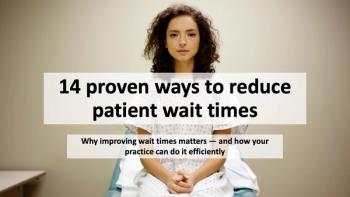
One Practice's Journey Back to a Server-based EHR
This Colorado practice switched to a cloud-based EHR and then switched back to a server-based system. Here's the reason why.
Spending $100,000 a year to manage his practice's client server-based EHR in-house prompted John Bender, a family physician at a 10-doctor practice in Fort Collins, Colo., to switch to a cloud-based EHR from the same vendor. Within 1.5 years, his practice switched back to the client server-based version of the software.
Using the client server-based EHR, along with hiring in-house IT talent, is actually costing his practice less than having the software hosted in the cloud. Physicians Practice recently talked to Bender to learn about his practice's journey.
Question: What prompted your practice's move to a cloud-based EHR?
Answer: I thought that going with our EHR vendor's cloud-based solution would be the right way to go, after I realized that we were spending $100,000 a year to manage our client server-based EHR in-house. The system would go down maybe once a quarter for a couple of hours or maybe a day. Our IT people weren't on-site, so we'd have to call people on-site or they might be able to have remote access to our system to get it up and running again. With the cloud-based EHR, we were looking forward to having a system that didn't go down.
We stayed with the cloud-based version for about 1.5 years, and then we went back to a server-based EHR from the same vendor.
Question: Why did you go back to the client server-based version of the EHR?
Answer: For one, we learned that the cloud-based EHR wasn't as fault-tolerant - or resistant to going down - as we had thought. Occasionally, even if my internet was up, the EHR wasn't always available and that meant there were times when we couldn't access it. We also found that access to the EHR wasn't as fast as we had thought it would be, even though we [installed] high-speed internet on our end and our vendor did, too.
As a result, we found that patient visits were taking 20 to 30 seconds longer. That doesn't seem like much, but it adds five to ten minutes to the day. For an organization of our size, paying five to ten minutes overtime every day, [it] adds up.
With the client-server based version, we were spending a few thousand dollars a year on support from our IT consultant. With the cloud-based version, we found that we were actually spending more - and that's on top of what we already were paying our EHR vendor. That's because we still needed an IT consultant to help us with desktop and monitor issues. We still had to call on the old IT people to come in if the internet went down. We found that we needed the "IT boots on the ground," and not everything could be done remotely.
Also, with the cloud-based version of the software, our providers needed to first enter their password and then verify their identity with fobs we bought from the EHR vendor. This step required that they enter an eight-digit code to prevent someone from impersonating them. But the fob system was funky. If a doctor forgot their fob, they couldn't work that day. Or the fobs would get lost and we'd get charged hundreds of dollars for a replacement.
Then, I'd go to HIMSS where I'd see a vendor that could help us do robocalls to patients with past-due bills to prompt payment. Or we'd want to connect to a [regional health information organization] (RHIO). I'd ask our vendor about adding the capability to connect to the RHIO or enable the robocalls and they couldn't do it; that's because it would require changing settings that would affect hundreds of other practices whose EHR they were hosting.
Question: What was involved in switching back to a client server-based version of the EHR?
Answer: We had to pay a cancellation fee when we terminated the contract for the cloud-based version after a year-and-a-half, and we sent back all the fobs. Then we took all the data and loaded it on our own local servers. We also hired two full-time IT people. They're on payroll, and they fix any issues; they also keep the system proactively tuned. Paradoxically, we found that this model costs us less than having the EHR hosted in the cloud.
The client-server based version almost never goes down. When it does go down, we might have to reboot it during lunch. But we don't have a "hard downtime" where we have 150 patients in the clinic that day and can't access their records.
Newsletter
Optimize your practice with the Physicians Practice newsletter, offering management pearls, leadership tips, and business strategies tailored for practice administrators and physicians of any specialty.








